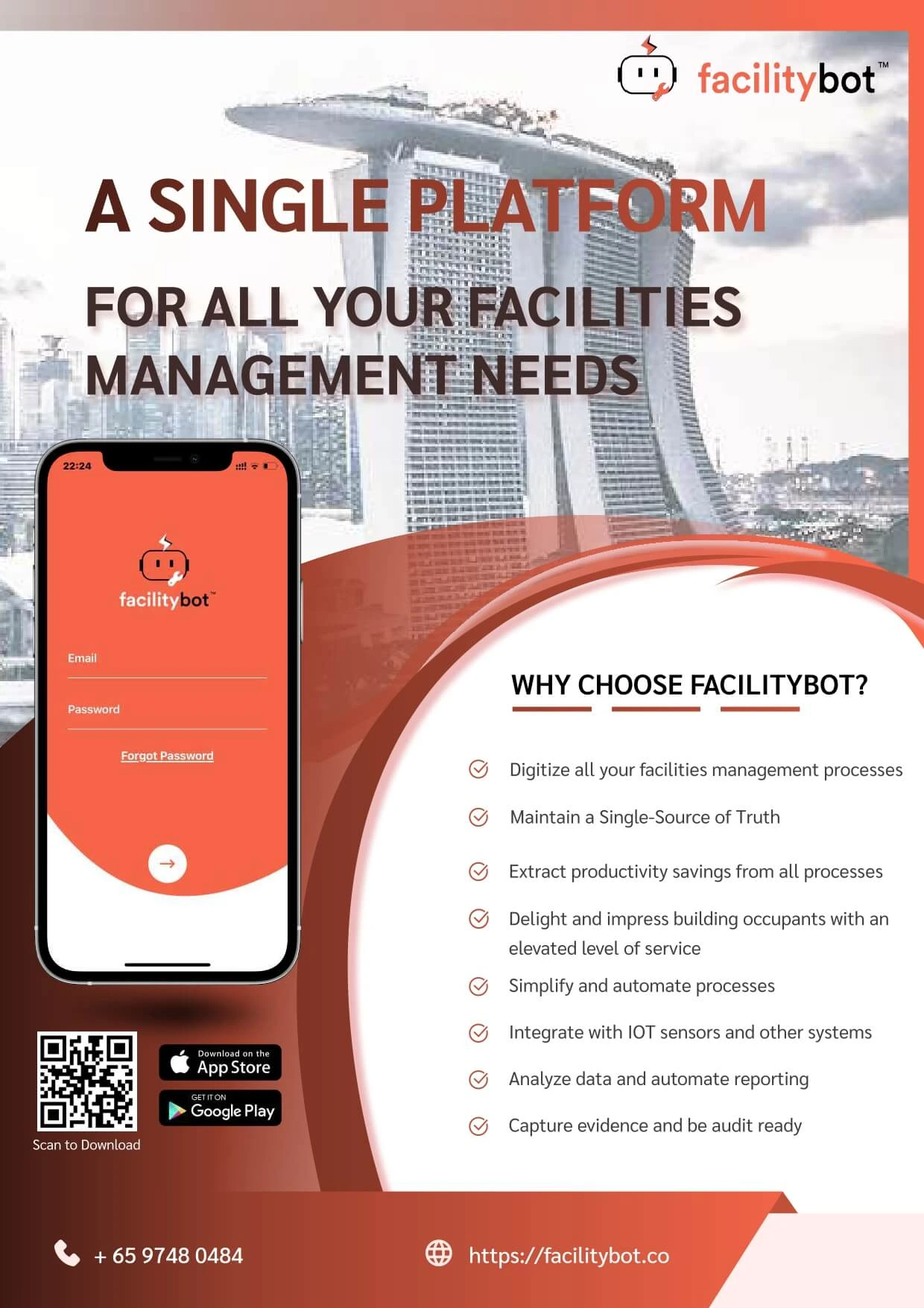In today’s rapidly evolving built environment, energy consumption has become one of the largest operational expenses for facilities worldwide. From lighting and HVAC systems to machinery and utilities, energy use directly affects both financial performance and environmental impact.
That’s where AI energy efficiency facility management comes in — the use of artificial intelligence to monitor, analyze, and optimize energy consumption across buildings and assets. With advanced analytics, predictive insights, and automation, AI enables organizations to achieve sustainable operations while significantly reducing costs.
This article explores how AI is transforming energy management, the benefits it brings to facilities, and how solutions like FacilityBot are empowering organizations to make smarter, greener, and more cost-efficient decisions.
The Growing Need for Energy Efficiency in Facilities
Energy costs account for up to 40% of total operational expenses in commercial buildings. With rising utility prices and stricter sustainability regulations, organizations are under pressure to reduce waste and improve efficiency.
Traditional energy management often relies on static schedules, manual monitoring, and reactive maintenance — methods that fail to capture real-time variations in energy use.

In contrast, AI-driven facility management leverages continuous data collection and intelligent analysis to identify inefficiencies and recommend corrective actions instantly.
This proactive approach allows facility managers to balance energy consumption, reduce wastage, and meet corporate sustainability goals — all while cutting costs.
What Is AI Energy Efficiency in Facility Management?
AI energy efficiency facility management involves using artificial intelligence and machine learning to analyze energy consumption data and optimize usage patterns in real time.
Through IoT sensors, smart meters, and automated control systems, AI continuously monitors factors like temperature, occupancy, and lighting levels. It then uses predictive models to determine the optimal settings that reduce energy waste without compromising comfort or productivity.
In simple terms — AI acts as a 24/7 “energy manager” that learns, predicts, and adjusts building operations automatically.
How AI Improves Energy Efficiency in Facility Operations
1. Real-Time Energy Monitoring and Analytics
AI systems collect massive amounts of energy data from various sources — HVAC systems, lighting, elevators, and other electrical equipment.
Unlike traditional reporting tools, AI platforms analyze this data in real time. They can pinpoint which equipment or zones are consuming excess energy and suggest immediate corrective measures.
For example, FacilityBot’s intelligent dashboard can integrate with energy sensors to provide a holistic view of a building’s energy performance. Facility managers can instantly identify inefficiencies, compare usage across facilities, and take informed actions.
2. Predictive Maintenance for Energy-Intensive Equipment
One of the most powerful applications of AI is predictive maintenance. Energy inefficiency often stems from poorly maintained equipment — clogged filters, failing motors, or refrigerant leaks.
AI algorithms detect subtle performance changes before they lead to major breakdowns or energy spikes. This predictive capability ensures that systems run at optimal efficiency and prevents costly downtime.

For instance, an HVAC system operating with a faulty sensor may consume 20–30% more energy. An AI-enabled platform like FacilityBot can detect anomalies early and automatically schedule maintenance, ensuring minimal energy waste and extended equipment lifespan.
3. Smart Automation and Dynamic Controls
AI optimizes energy use through smart automation. It dynamically adjusts lighting, heating, and cooling based on occupancy levels, time of day, or even weather conditions.
For example, during low occupancy hours, AI can dim lights or reduce HVAC load to conserve power. Similarly, it can pre-cool or pre-heat spaces just before occupancy, ensuring comfort while minimizing waste.
With FacilityBot’s automation capabilities, facilities can set up intelligent workflows that integrate with sensors and control systems — turning sustainability from a manual effort into an automated, measurable process.
4. Demand Forecasting and Energy Planning
AI doesn’t just optimize current energy use — it predicts future demand. By analyzing historical consumption patterns, AI can forecast peak usage periods and suggest strategies to reduce demand charges.
This predictive planning helps organizations purchase energy more strategically and avoid penalties for exceeding contracted limits.
FacilityBot can be integrated with such forecasting systems, providing managers with data-driven insights to plan energy budgets and sustainability initiatives more effectively.
5. Enhanced Sustainability and ESG Reporting
As environmental, social, and governance (ESG) standards become integral to corporate strategy, accurate reporting on energy efficiency is essential.
AI simplifies ESG compliance by automatically tracking carbon emissions, energy savings, and performance metrics. It can even generate ready-to-share sustainability reports for stakeholders and auditors.
By combining AI energy efficiency facility management tools with FacilityBot’s reporting features, organizations can demonstrate measurable progress toward sustainability targets — without the manual data crunching.
Key Benefits of AI Energy Efficiency Facility Management
Implementing AI-driven energy management brings several long-term advantages:
| Benefit | Description |
|---|---|
| Reduced Costs | AI optimizes energy consumption, lowering utility bills and maintenance expenses. |
| Increased Equipment Lifespan | Predictive maintenance ensures assets run efficiently and last longer. |
| Sustainability Compliance | Automated tracking simplifies ESG and carbon reporting. |
| Operational Efficiency | Real-time data enables faster, smarter decisions. |
| Comfort and Productivity | AI balances comfort with efficiency, maintaining ideal working environments. |
These benefits align perfectly with the goals of modern facility management — efficiency, sustainability, and cost control.
FacilityBot: AI-Powered Efficiency for Modern Facilities
FacilityBot is at the forefront of smart facility management software, helping organizations harness AI and automation to streamline operations — including energy management.
Here’s how FacilityBot supports AI energy efficiency facility management:
- Integration with IoT sensors: Collects live data on temperature, occupancy, and equipment performance.
- Automated maintenance scheduling: Reduces energy loss by ensuring timely service of high-energy systems.
- Smart workflow automation: Adjusts operations dynamically to reduce unnecessary energy usage.
- Centralized dashboards: Visualizes energy trends across buildings for smarter decision-making.
By combining these features with AI-driven analytics, FacilityBot enables organizations to optimize energy consumption effortlessly — saving costs while contributing to sustainability goals.
Real-World Example: Smarter Energy Efficiency with AI
Consider a corporate office using FacilityBot. The building is equipped with motion sensors, smart lighting, and HVAC controls.
- AI analyzes real-time occupancy data and adjusts lighting intensity based on movement.
- The HVAC system uses predictive algorithms to maintain ideal temperature while avoiding overuse.
- FacilityBot detects a fan motor operating inefficiently and automatically schedules a maintenance request.
- Over six months, the building records a 25% reduction in energy consumption and significant cost savings.
This example illustrates the tangible results of combining AI with facility management software — creating a proactive, energy-conscious operation.
The Future of AI and Energy Efficiency in Facility Management
The next wave of innovation will push AI energy efficiency facility management even further. Expect to see:
- AI digital twins simulating building performance to test energy-saving strategies.
- Machine learning models predicting utility price changes and optimizing contracts.
- Self-learning energy systems that autonomously fine-tune performance in real time.
- Integration with renewable energy sources to balance grid load intelligently.
As technologies like FacilityBot evolve, facilities will not only become more efficient — they’ll become self-optimizing ecosystems that balance cost, comfort, and sustainability automatically.
Conclusion
Energy efficiency is no longer a luxury — it’s a necessity. With AI energy efficiency facility management, organizations can transform how they consume, monitor, and optimize energy.
AI enables facilities to shift from reactive cost control to proactive energy optimization — improving performance while reducing environmental impact.
Platforms like FacilityBot make this transformation achievable by integrating AI, automation, and intelligent reporting into one easy-to-use system.
By adopting AI-driven energy management today, facility managers can unlock lower costs, smarter operations, and a greener future tomorrow.




